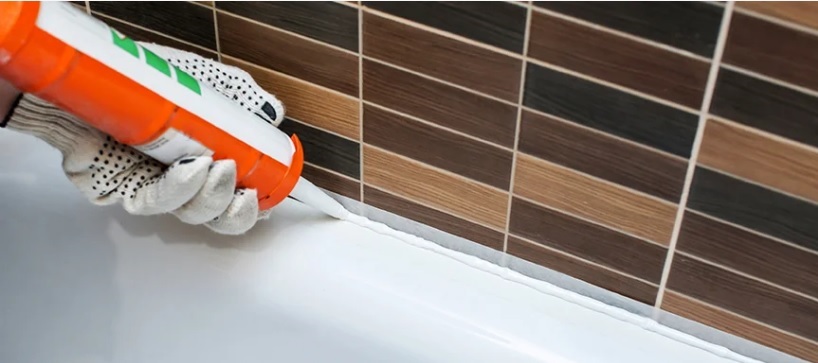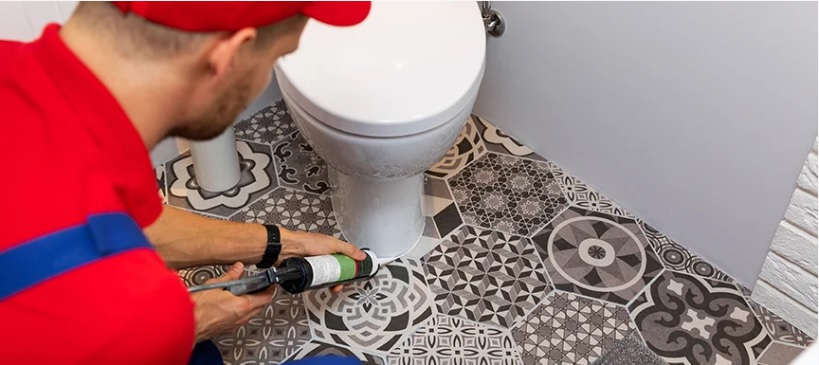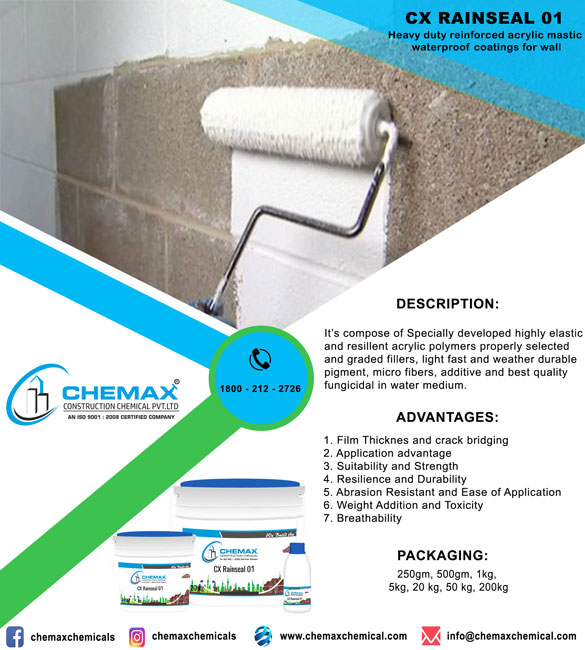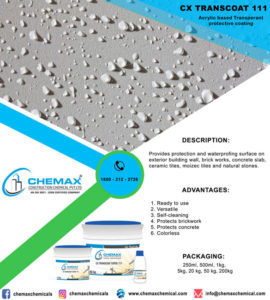High Quality Bathroom Waterproofing Chemicals
A crucial component of any remodeling or new construction project is bathroom waterproofing. When done correctly, it can aid in avoiding water and moisture damage that can eventually result in leaks, mould growth, and other pricey issues in your bathroom. If you want waterproof walls or flooring for your bathroom, there are a number of solutions that can offer reliable security without breaking the bank. ( Chemax- Waterproofing Chemical Experts )
In this post, we’ll examine some of the Top Bathroom Waterproofing Chemicals and discuss how to pick the best one for your needs. So let’s get going !!

Any home must have Waterproofing In The Bathrooms. It aids in preventing long-term, expensive repairs and water damage. Waterproofing helps prevent the growth of moulds, mildews and other fungi on bathroom walls and floors. Additionally, it stops stains, cracking, and peeling brought on by a buildup of moisture in the air over time. You won’t need to worry about future water damage or make repairs if your bathroom is properly waterproofed.
Making sure that everything is sealed off is necessary to ensure that moisture cannot enter into any gaps or crevices around tiles, bathtub edges, shower curtains, etc. for Waterproof Bathroom Flooring.
If you want to stop water damage and keep your home’s structure intact, you must waterproof your bathroom. To get you started on Waterproofing Your Bathroom, consider the following advice:
- Begin by evaluating the state of your restroom. Inspect any tile or grout for cracks and look for spots where the caulking has worn away. Before beginning the waterproofing procedure, fix any issues you find.
- To make Bathroom Flooring Waterproofing , think about applying an epoxy sealer or liquid rubber membrane on top of the tiles or other surface material. This will act as a strong barrier against the entry of moisture.
- When installing new tile and grout, if at all possible, use waterproof underlayment and grout. This will add to the protection and aid in preventing water damage.
- To effectively block moisture when Waterproofing Bathroom Walls, use a waterproof or wall paint liner. Make sure that silicone caulk or other waterproof sealer materials are used to adequately seal the seams between tiles.
- Finally, place a fan in the bathroom to swiftly expel any wet air. To ensure the success of any waterproofing project, this should be completed before starting.
- Your home will be shielded from water damage and kept in good condition for years to come if you use these advice for waterproofing your bathroom.
How Waterproofing is Done for the Bathroom Floor Easily ?

It’s crucial to waterproof a bathroom floor to keep the space dry and free from moisture. When waterproofing your bathroom floor, it’s crucial to follow the right procedures to prevent water damage and create a long-lasting, cozy environment.
Preparing the surface is the first step in Waterproofing a Bathroom Floor. This entails removing any previous tile or other material layers and cleaning up any muck, dirt, and debris. After finishing this, you ought to add a waterproof layer on top. Anything from a sealant to specialized waterproof membranes might be included in this layer. Before using your chosen product, make sure to thoroughly read the directions.
You can attach a waterproof membrane after the waterproof layer has been put, such as waterproof sheeting or an epoxy-based solution. This will increase the resilience of your floor and shield it from additional water damage.
Applying any necessary grout or sealants between tiles and along the walls is the final stage. Carefully applying these with a brush and adhering to application guidelines is advised. If wanted, you may then start tiling after this is finished. ( We Also Deals On ” Best terrace waterproofing chemicals ” )
You may prevent moisture damage to your floor and other issues brought on by water seepage by following these instructions when waterproofing a bathroom floor. With a little work, you can simply keep your bathroom cosy and dry for years to come!

There are a few products you should consider using when it comes to waterproofing your bathroom. These include:
Sealants:
The connections between surfaces, such as tiles and showers, or those near the tub or washbasin, are where sealants are most commonly utilised. Additionally, they can be used to seal penetrations around fixtures and surrounding pipes. One of the most widely used sealant materials for bathroom waterproofing is silicone.
Waterproof Membranes:
Although they can be used on their own as a protective covering over walls and floors, waterproof membranes are frequently used in conjunction with sealants. These are liquids that need to be applied correctly in accordance with the directions. When applying waterproof membranes, it’s crucial to follow all the instructions exactly.
The most important thing when waterproofing your bathroom is to select a technique that fits your demands and budget. Your bathroom will stay secure and dry for many years to come if the proper waterproofing procedures are used. You can choose the finest solution for your bathroom by carefully weighing all your alternatives and knowing which waterproofing techniques perform best in various scenarios. ( We have Also “Swimming Pool Waterproofing Chemicals” )
Therefore, begin your investigation right away to ensure that your bathroom is dry and protected from water damage.





